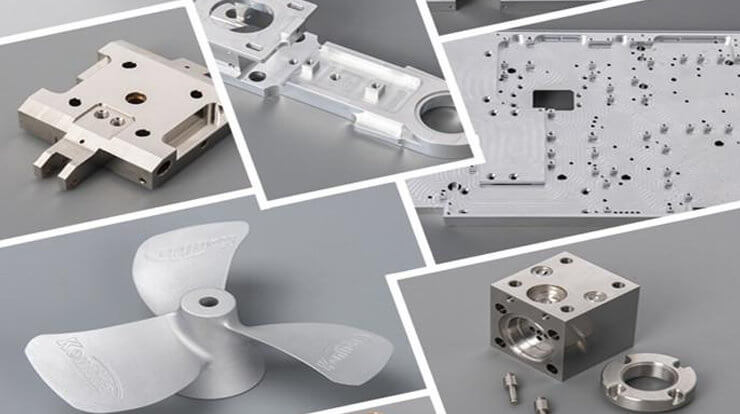
Today, UKO invited Samuel, who has ten years of CNC machining experience, to answer this question. Samuel is an old customer of our company, and also our special consultant on CNC products. Next, we will share Samuel’s experience in aluminum processing.
Thanks for UKO’s invitation. Because I have been working in CNC for nearly ten years, and I have been mainly engaged in aluminum products. I have worked in several large factories of thousands of CNC machining centers in China, and I have worked in small factories for several years, and I have seen many experts. I think I should be qualified to answer this question.
OK, back to the topic, the actual processing parameters are: spindle speed, tool diameter, cutting amount (divided into XY direction and Z direction), feed rate.
The factors that affect the processing parameters include the structure of the machine bed, the size of the spindle (BT30, BT40, BT50, etc.), the tool material used, whether the coolant is oil-cooled or water-cooled, the appearance requirements of aluminum parts, etc.
CNC bed consists of hard rail and line rail. Hard rail has good rigidity and is suitable for making steel parts. Line rail is specialized in processing aluminum parts because of its fast-moving speed, but its rigidity is not as good as a hard rail. Therefore, the back feed (XY direction), the bottom feed (z-direction), and the feed rate of the aluminum parts processed by the hard rail machine tool will have advantages over the wire rail machine tool.
CNC machining center is divided into BT30, BT40, BT50 according to the size of the spindle taper hole. BT30 is the smallest and BT50 is the largest. The taper hole not only determines the size of the spindle and the force rigidity of the spindle but also determines the outer diameter of the tool holder. The larger the spindle taper hole and the larger the handle, the better the rigidity and the larger the parameters can be given.
In addition to the cooling system, oil cooling is the best, followed by water cooling, and air cooling is only used when necessary. It also affects the processing parameters.
The more strict the customer’s requirements on appearance, the smaller the cutting amount and the slower the feed will be.
For example, BT40 water cooling system of hard rail machine tool, proofing or small batch production, 12 wave knife, commonly known as a rough leather knife, S3500 ~ 5000, cutting depth 12mm, XY cutting depth 12mm, F300 ~ 600 are OK. If the machine tool is replaced by a line track machine tool, XY can’t eat the full tool, up to 10 mm. Otherwise, the spindle of the machine tool will break quickly, and the accuracy of each axis will also drop quickly. The most important point is that it is easy to break the tool.
I often use BT40 line rail machine tools. The roughening parameters are light and fast. For example, the roughening of the shape is general. The blank margin is about 2mm on one side. The 16 thick leather knife, S5000, f3000, Z-direction single cutting is 5mm. The sound is crisp and the efficiency is good. With BT30, the same speed and feed, the z-down cutter should be reduced by about 1 mm. BT50 has not been used, I can’t give you a reference here, but the processing parameters can be increased.
Specific to the size of the tool diameter, I think the smaller the diameter is, the higher the speed is, the smaller the tool feed is, and the slower the feed is. No matter how fast the speed is or how slow the feed is, the cutting tool will break. I have personal experience.
In addition, such as white steel inserts, carbide inserts, aluminum inserts, there are some differences in parameters.